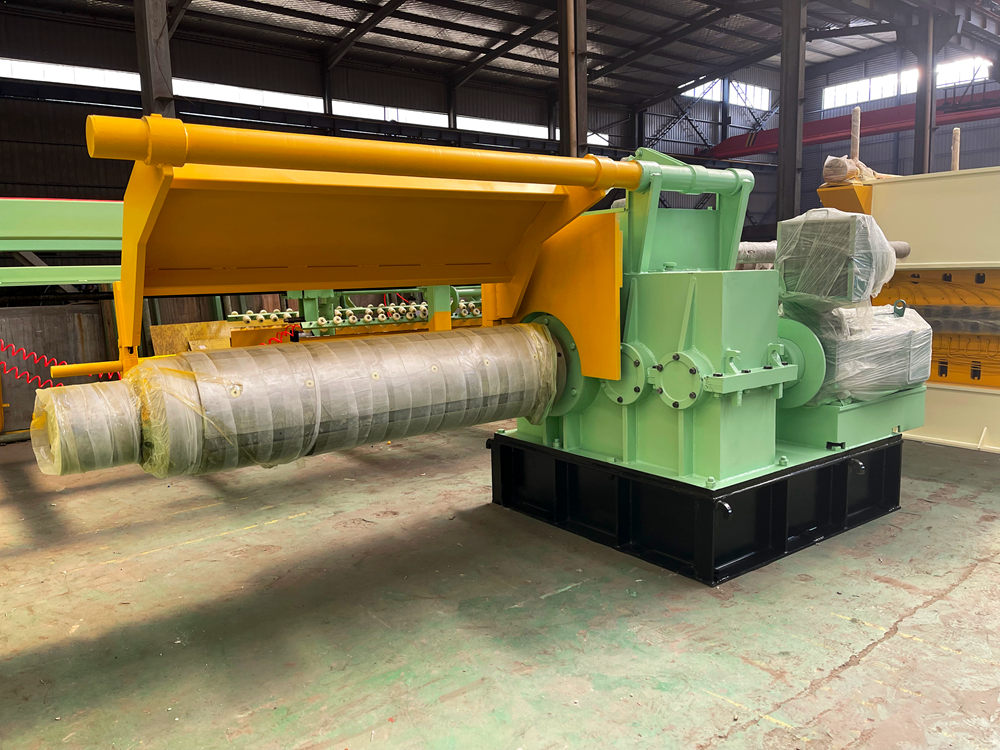
Stud and Track Forming Machine Revolutionizing the Manufacturing Process
In the realm of manufacturing, efficiency and precision are paramount. The advent of advanced machinery has transformed the landscape, making it possible to produce components with exceptional accuracy and speed. One such innovation is the stud and track forming machine, a sophisticated tool designed specifically for the production of studs and tracks used in various construction and industrial applications. This article explores the functionality, benefits, and applications of this crucial piece of equipment.
Functionality of Stud and Track Forming Machines
Stud and track forming machines are mainly utilized to create metal framing components that form the skeleton of many structures. The process involves taking coils of metal strip and transforming them into studs and tracks through a series of mechanical operations. These machines perform several key functions, including
1. Material Feeding The metal strip is fed into the machine from a coil. The feeding mechanism is designed to ensure continuous and precise conveyance of the material.
2. Forming The machine employs a series of roller dies to shape the strip into the desired profile of the stud or track. This process can be tailored to create various sizes and shapes, depending on the specifications required for a particular project.
3. Cutting After forming, the continuous strip is cut to length at predetermined intervals, resulting in individual studs or tracks that meet the necessary dimensional standards.
4. Punching and Notching Many systems also include options for punching holes or notching the formed components, which are integral features for joining the materials together during assembly.
5. Quality Control Advanced models come equipped with sensors and software that monitor the process in real-time, ensuring that each component meets quality standards before it exits the machine.
Benefits of Using Stud and Track Forming Machines
The use of stud and track forming machines offers a multitude of benefits that enhance manufacturing processes
- High Efficiency These machines are designed for high-speed operations, significantly reducing production time. This efficiency translates to lower labor costs and faster turnaround on projects.

- Precision Engineering The forming process guarantees uniformity in size and shape, which is critical for construction projects where consistency is key. This precision helps in minimizing waste and ensuring a better fit during assembly.
- Flexibility and Customization Many stud and track forming machines are adaptable, allowing manufacturers to switch between different profiles and sizes quickly. This flexibility enables companies to respond efficiently to changing market demands.
- Cost-Effective Production By streamlining the manufacturing process, businesses can reduce material waste and lower overall production costs. The investment in such machinery often yields a favorable return on investment through increased output and reduced labor needs.
- Robust Construction These machines are built to withstand the rigors of industrial use, ensuring longevity and reliability. Regular maintenance can further extend their operational life, providing continued value.
Applications of Stud and Track Forming Machines
Stud and track forming machines are predominantly used in the following areas
1. Construction Industry They are essential for creating the metal framing that supports walls, ceilings, and roofs in both residential and commercial construction. The lightweight yet sturdy nature of steel studs makes them an attractive option for modern building designs.
2. Manufacturing of Prefabricated Structures As the trend of modular construction grows, the demand for precision-cut and formed metal components increases. Stud and track forming machines streamline the production of these materials, facilitating faster assembly times on-site.
3. Industrial Applications Beyond construction, these machines are also used in manufacturing components for various industrial applications, such as automotive assemblies and machinery frameworks.
4. Renovation Projects As buildings undergo renovations, the ability to produce custom-sized studs and tracks quickly allows contractors to adapt and modify existing structures with ease.
Conclusion
The stud and track forming machine stands at the forefront of modern manufacturing technology, offering unparalleled efficiency and precision for creating essential construction components. As the demands of the building industry evolve, the importance of such advanced machinery cannot be overstated. Investing in stud and track forming technology positions manufacturers to meet current market needs while preparing for future challenges, ensuring continued growth and success in an ever-competitive landscape.